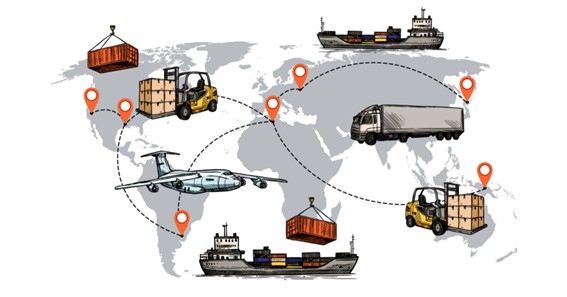Online shopping is here to stay. According to Digital Commerce Industry Estimates, 2020 saw the “highest annual U.S. e-commerce growth in at least two decades,” with a 44 percent increase. Due to the rapid growth of cross-border e-commerce and the shift in consumer preferences towards online shopping, shipping costs and delivery times have been embedded into our daily lives. The need to fill more online orders, especially for retailers, has increased concern over proper shipping practices. This is also explainable by a sudden rise in dropshipping.
Despite their apparent similarities in service offerings, dropshipping and third-party logistics (3PL) companies are fundamentally different. Explore the differences between these two fulfillment options, and choose the one that best helps your company.
What is a 3PL?
Fulfillment services and third-party logistics (3PL) are frequently used interchangeably. Larger organizations that offer more items use a 3PL.
These partners oversee the entire fulfillment process of their associated brand. They handle customer support, receive products from producers, maintain inventories, pick and pack orders, package joint products, and offer the necessary customization selections. Higher profit margins, greater flexibility, and greater control are all essential elements in a company’s choice to adopt a 3PL.
What is Dropshipping?
Drop shipping is a popular fulfillment method for small enterprises and startups since it requires less upfront cost. A low-cost startup usually doesn’t have any products or proper stock; instead, they rely on dropshipping.
Dropshipping enables a vendor to purchase an item directly from the supplier and deliver it to the client. The seller does not physically handle any product during the transaction and is not responsible for fulfillment, inventory, shipping, or other related concerns.
Drop Shipping V.S 3PL: Explore The Difference
Now that you understand dropshipping and third-party (3PLs) let’s examine their essential differences.
-
Vendor
Except for the address on the box, a customer cannot differentiate between drop shipment and third-party fulfillment. Drop shipping forces the seller to choose between profit margin and cost of money for each transaction. You don’t need to pay the distributor any money upfront when you agree to dropship. However, when working with a third-party provider, you must purchase the product before offering it to your clients. Purchasing inventory in advance allows you to set the price according to your cost and current market inflation rates.
-
Objective
The manufacturer acts as a fulfillment provider in dropshipping. Dropshipping can work as a model where the retailer advertises the products the manufacturer ships and receives a cut of each sale. Goods, which the seller buys in bulk, must be stored and delivered by the firm in the form of third-party fulfillment. Unlike dropshipping, the supplier may provide other services, such as handling returns and customer support.
-
Inventory
Inventory management is another area where there are significant differences. The third party is in charge of maintaining the products that belong to your e-commerce company. However, the vendor does not own the product they provide via dropshipping on their website.
-
Shipment
Each order in dropshipping is sent from the distributor or manufacturer to the customer directly. At the same time, a third-party fulfillment provider sends the product from a warehouse to the consumer.
Drop shipping and third-party fulfillment are two great choices for outsourcing order fulfillment. However, everyone should weigh the pros and cons of each before choosing the best option. Specific business requirements and models will ultimately determine the best practice.






